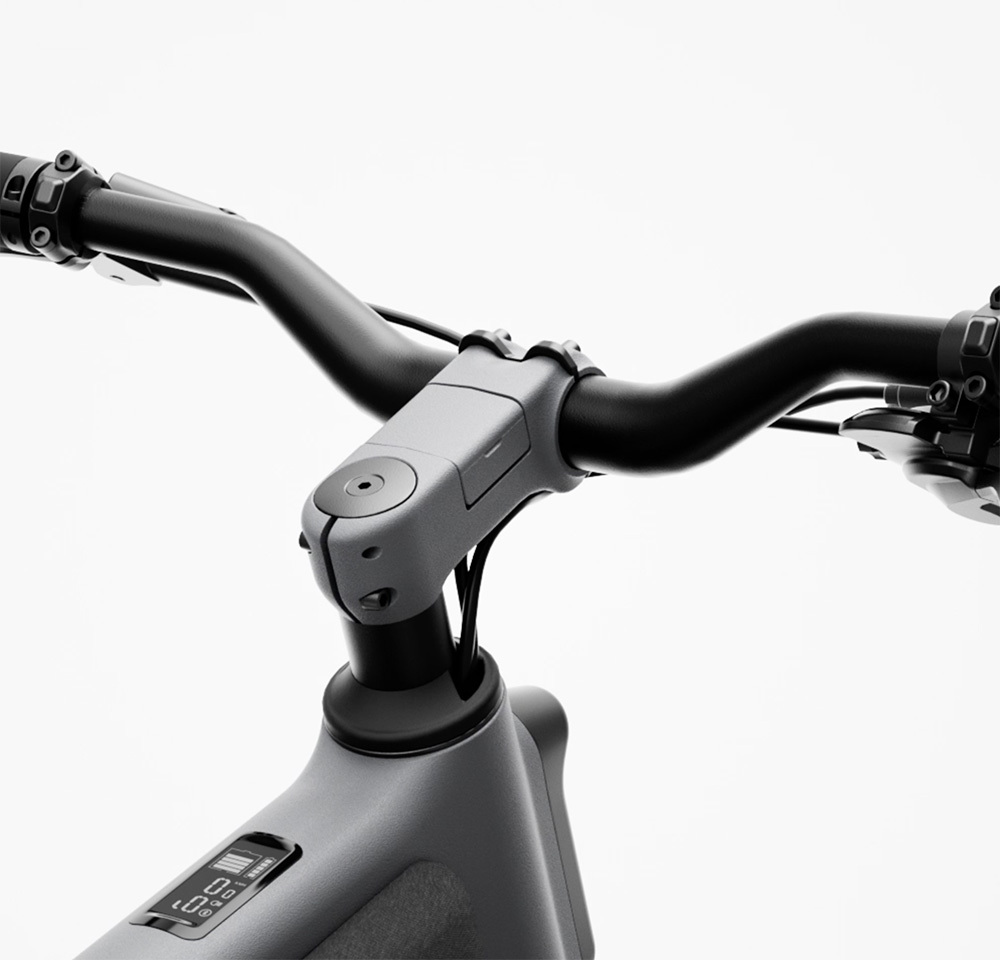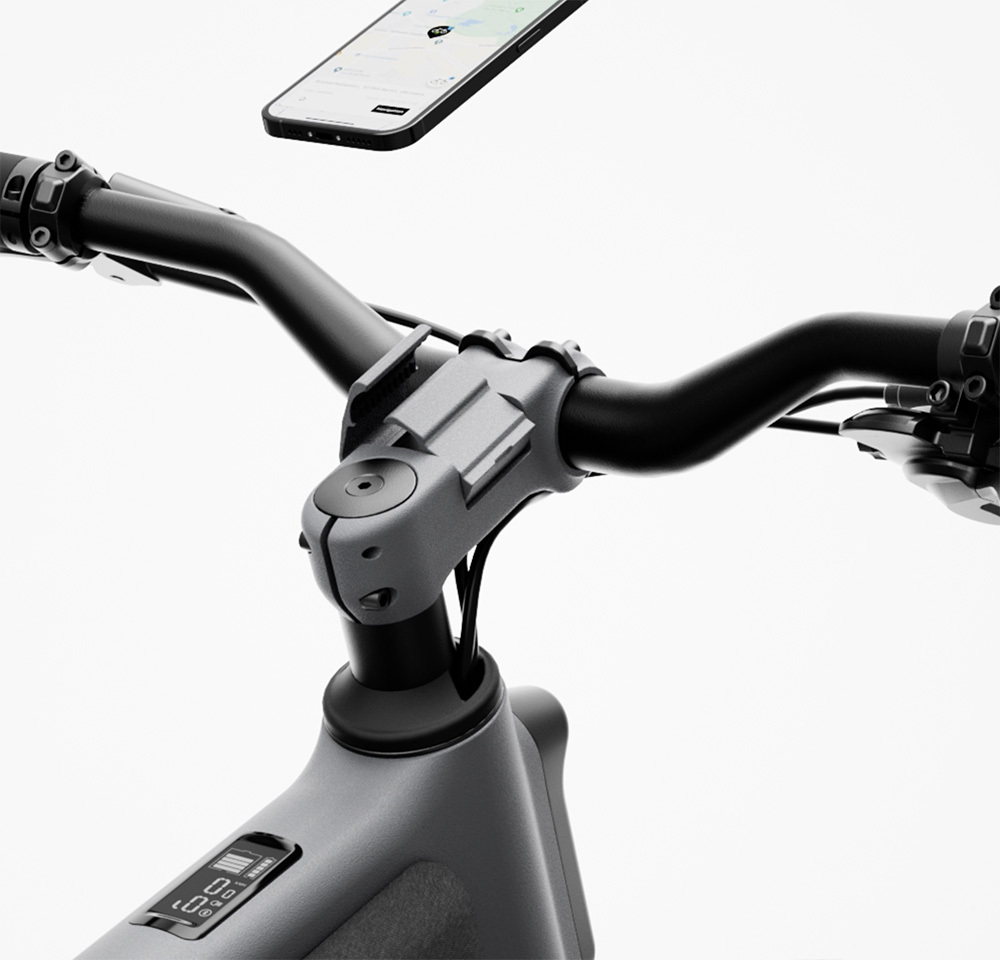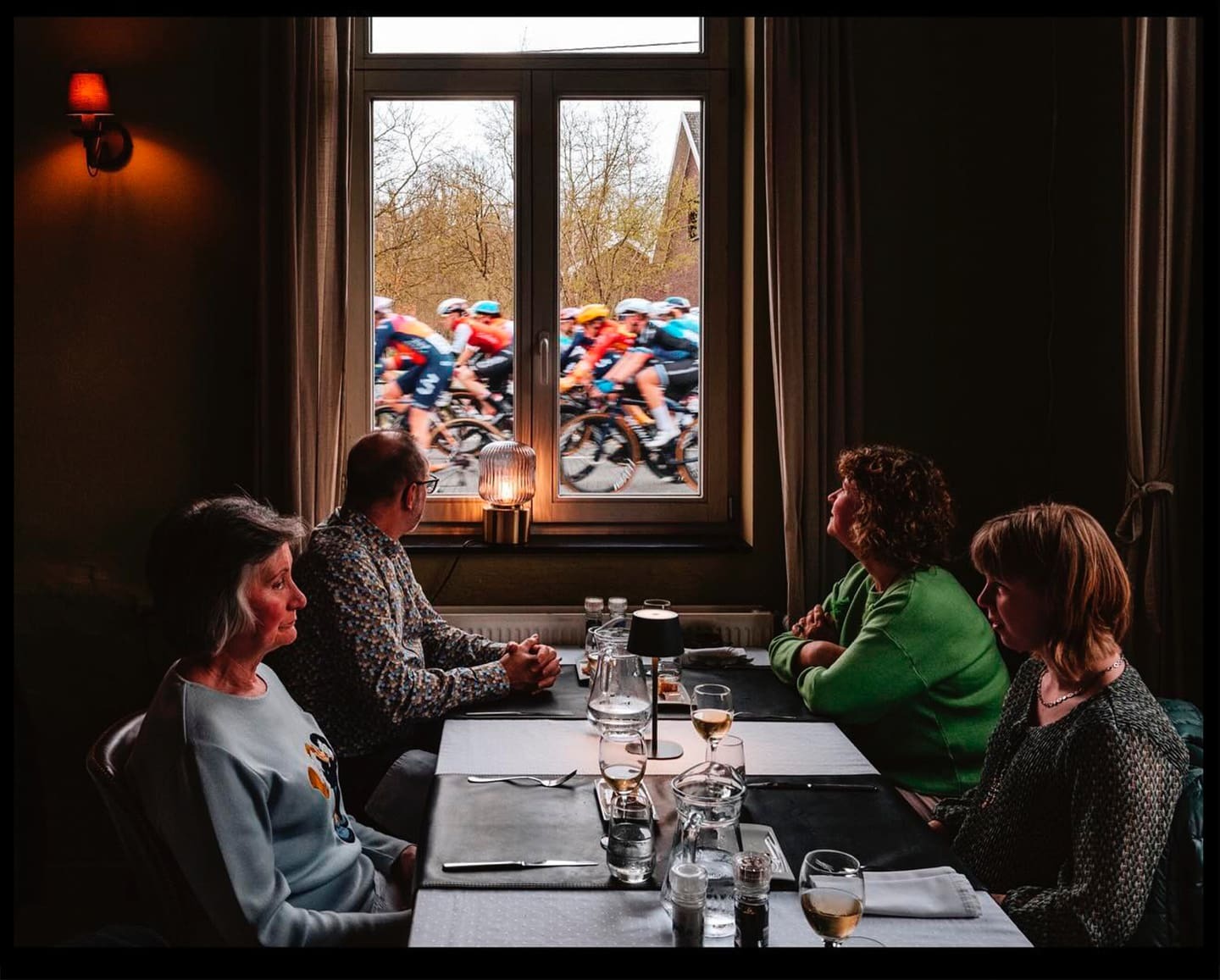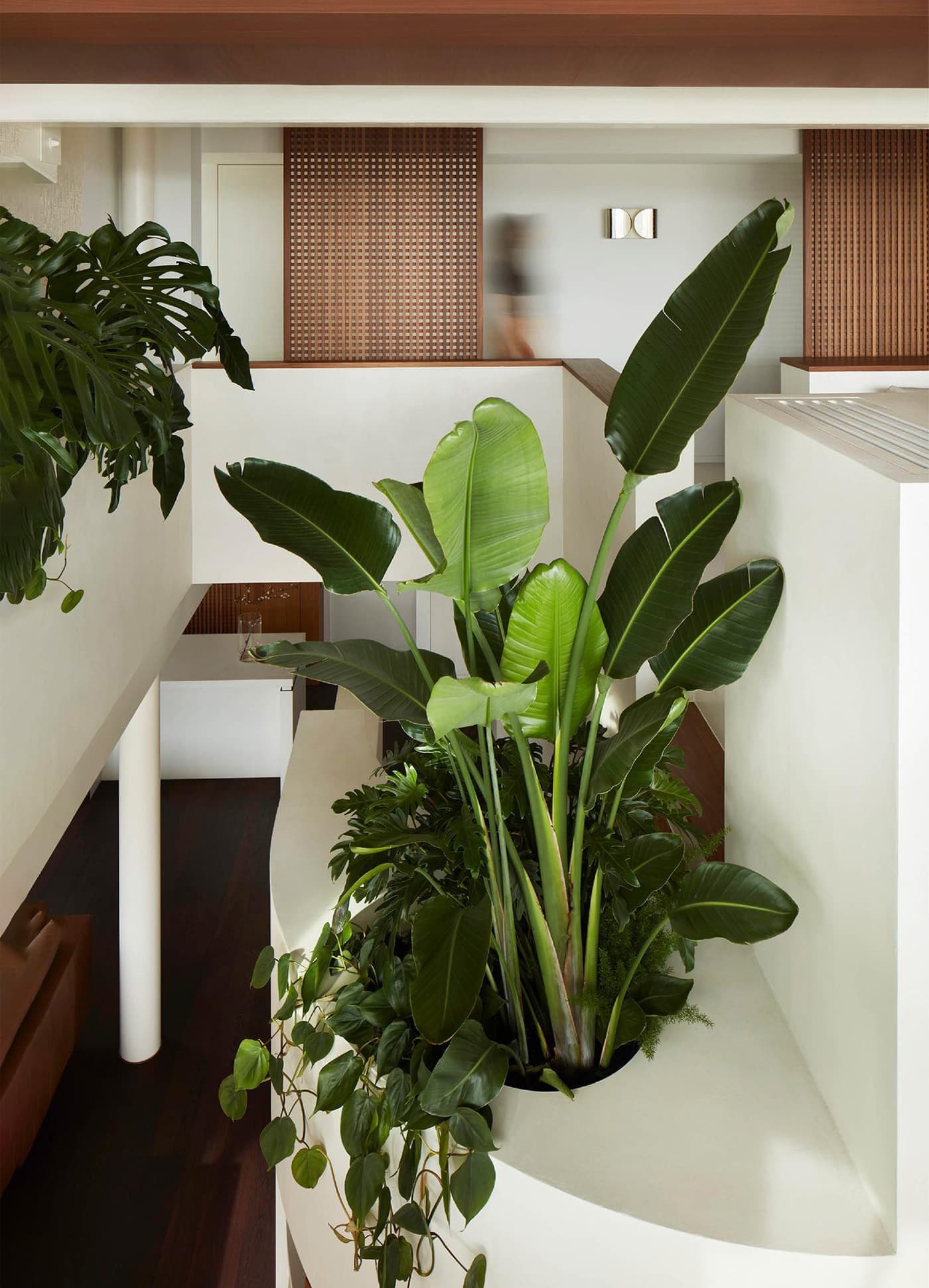Veerle's Sidenotes A collection of thoughts on subjects of my interest.
Lemmo One
When searching for an aesthetically pleasing electric bicycle, there are numerous options to consider. For example, the Belgian Cowboy and the Amsterdam-based VanMoof. VanMoof, which filed for bankruptcy on July 17, 2023, is now owned by e-scooter brand Lavoie. They have relaunched the brand, retaining its original name. Another noteworthy option is from Light Electric Micro Mobility (LEMMO), a company I recently discovered after their bike won a Red Dot Award in the "Best of the Best" category.

Lemmo OneMk2
The bicycle, called the Lemmo One, is described as an "All Urban Terrain E+Bike." A few clever features immediately caught my eye in its design. The first noteworthy feature is that the front light is removable, allowing it to double as a pocket lamp. The front light also charges when in bike mode. That's not all;
Smartpac
The Lemmo One is a lightweight bicycle, weighing just 15kg without the battery pack. The battery pack, known as the “Smartpac” weighs 3kg and boasts 531Wh. It offers 65W USB A&C output charging and takes 3.5 hours to fully charge. The Smartpac integrates the battery, IoT motor controller, and can also function as a power bank for your devices. With built-in GPS, 4G, Bluetooth, and support for "Apple Find My”, it enhances connectivity. LEMMO also implies that the Smartpac has “upgradable smart tech” so this means over-the-air updates are possible. According to LEMMO, the detachable Smartpac is environmentally beneficial, as the bike itself can last 10 to 15 years while the technology evolves every 5 years. However, this consideration only partly applies to the Smartpac, as the rear wheel's Dual Mode Hub is still integral to the bike. There’s also a ‘Smartpac E-lock’ so that it can’t be stolen. The removable protective cloth cover that holds it can be colour customized to suit your style.
Phone Holder
The second clever part is integrated so well that you wouldn't notice if you don’t know that it is there. The universal phone holder is neatly and seamlessly integrated into the stem. There is no special phone case required and it is compatible with most phones.




Dual Mode Hub
Maybe the most clever aspect of this bicycle is the fact that you can make it a regular bicycle with just a pull and turn of the Patented dual-clutch structure. If you do that you get resistance free pedalling. The motor itself is 250W and is apparently very silent with 40Nm of peak torque. There’s also intuitive power boost thanks to the torque sensor. Apparently there's now also an upgraded version of the motor that delivers 56Nm of peak torque. To prevent theft the rear hub motor comes with a hub E-lock that blocks the wheel from turning.




Turbo Trekker
The upgraded motor is featured in a robust version of the Lemmo, known as the "Turbo Trekker." This motor can be adjusted to the US speed standard of 32 km/h. In addition to the upgraded motor, the Turbo Trekker is equipped with a gravel fork suspension from SRAM, the "RockShox XPLR," which offers 40mm of travel, a full range of adjustments, and a solid lockout. It also includes a reinforced rear rack designed for bike packing, capable of carrying 2x 12kg loads. This bike features a stealth suspension seat system, contributing to its increased weight. Without the Smartpack, it weighs 18.5kg, and with the battery, it comes at 21.5kg—still relatively lightweight. The tires are 45mm Continental Terra Trail.

Custom Gravel Lemmo One
The regular version of the LEMMO One has a range of approximately ±100 km. I would expect the range to be a bit less with the heavier Turbo Trekker, though I haven't tested it.
Drive Train
Both versions of the LEMMO One have two options for the drive train. When opt to ride on diverse terrain you go for the Shimano Deore 10-speed derailleur (11-42T) with single front crankset (38T). When you only need a single gear you opt for the Gates’ Top series ‘CDX’ carbon fiber belt drive.
Hydraulic Disc brakes
Both versions have a hydraulic braking powerful 4-piston hydraulic front and rear brake with 160 mm brake discs guarantee maximum safety both in all types of riding. Didn’t find a brand for this.


Display and App
Like any modern bicycle, the LEMMO comes with a companion app. This app provides riders with bike information, function adjustments, GPS tracking, customer service, and online shopping. Screenshots show a 'Map Navigation' feature, but it's unclear whether you can map out a route or import routes from RidewithGPS or Strava to follow on the display.
The bicycle is reportedly available in Belgium, and I find the gravel-oriented Turbo Trekker particularly appealing. I can't comment on how it feels to ride since I haven't tested it yet. To give a proper review and decide whether to recommend it, I would need to take it on some of my gravel routes.
It's also worth noting that this isn't a 'Speed Pedelec' but is limited to the European standard speed of 25 km/h. Additionally, I couldn't find any information on whether the wheels are tubeless or tubeless-ready.
The Classics 2024
Every year, I eagerly anticipate the (Belgian) classics, yet they seem to pass by in the blink of an eye. Here are a few images I've chosen from E3 Harelbeke, Gent-Wevelgem, De Ronde van Vlaanderen, and Paris-Roubaix, captured by the exceptional visual storytellers Jered and Ashley Gruber.
Tour of Flanders


Shirin's game face!
Well, yesterday didn’t really go as we would have liked personally, but despite everything that didn’t go to plan, I enjoyed myself.

Mathieu van der Poel attacked on the Koppenberg in the rain to avoid the mayhem that followed. What happened next was like a scene from the wayback machine with riders on foot trying to get to the top. In the women's edition I'm so glad that Katarzyna Niewiadoma had a second place. That girl's fighting spirit will reward her with a first place in the future, I'm sure!

These photos are filled with stories, capturing the emotions and hardships experienced within them. However, this year will be remembered for some personal misfortune, as Jered torched his ACL and MCL, requiring surgery and a recovery journey similar to those of the athletes he captures so masterfully. I'm confident he will emerge stronger, just like those professionals!
E3 Saxo Classic






Gent-Wevelgem




Paris-Roubaix





That devastating final sprint is pure gold!
The thrilling final of the women's edition of Paris-Roubaix will stay with me for a long time. Everything felt like it was game-over but Lotte Kopecky appeared from what looked like a lost position and worked her way to the front with that devastating final sprint.
Photos by Jered and Ashley Gruber
El Gran Canal
If you've been keeping up with me for a while, you're aware of my fondness for wood. This post-modern duplex penthouse in Brussels, Belgium incorporates plenty of it. Its airy atmosphere and a touch of tropical modernism make it a prime contender for being featured here on my sidenotes.

Post-modern duplex penthouse in Brussels, Belgium
Post-modern Architecture
The reconversion of two duplex apartments into a penthouse was done by Altu, founded by architect Veerle Van de Walle and engineer-architect Francesca Bonne in 2018. The owners wanted to include a yoga studio in one portion of the first floor. Within the private residence, all components, including the central wall, were removed to declutter, enlarge, and highlight the structural features of the post-modern architecture. The vaulted roof and ceiling, which provide a view of downtown Brussels, now serve as key elements in shaping the redesigned interior and circulation plan.


Sculptural Staircase
In the space formerly occupied by the dividing wall between the two duplexes, they introduced the standout feature of the project: a grand, curved sculptural staircase. This striking design was likely influenced by the tropical modernist aesthetic of César Manrique, the Spanish artist, sculptor, and environmentalist renowned for his transformative work in Lanzarote.
On one side of the staircase lies a void, functioning as a central atrium, allowing natural light to flow freely throughout the entire living space spanning both floors. The top floor features a fireplace, and numerous large planters have been seamlessly incorporated into the staircase, emphasising its intricate design and substantial presence. These tropical houseplants bring nature inside, a sharp contrast with the urban jungle outside.




Strong Concept
The complete interior design, along with the bespoke wooden furniture, was conceptualised by Altu, who also provided guidance on selecting additional furniture pieces and items such as vintage lamps and artworks. One of these are the beautiful wood veneer lamps. This one is called '1003 Hans Pendant'. The warm glow of light filtering through pine veneer combined with an unexpectedly graphic and elemental form is the enduring appeal of this iconic design by Hans-Agne Jakobsson.
Postmodernism isn't typically associated with qualities like tastefulness, coziness, or homeliness. However, it's precisely this unconventional nature that presented us with the challenge of creating something contemporary with it.
The customisation is full of details that you do not immediately notice. Subtle details like the pattern of the wooden screens that is mirrored in the kitchen's cupboard doors, complemented by an 80s-style countertop and porphyry backsplash. Another excellent eye piece would be the custom design of the bed.

Custom made wooden furniture like this bed




With its blue-tiled décor, the bathroom could easily be mistaken for a luxurious retreat at a high-end vacation destination. I admire that they didn’t remove all those typical 80s and 90s elements, like those striking pillars or that typical roof vault. They accepted it and put their own spin on it. Beautiful design work!

